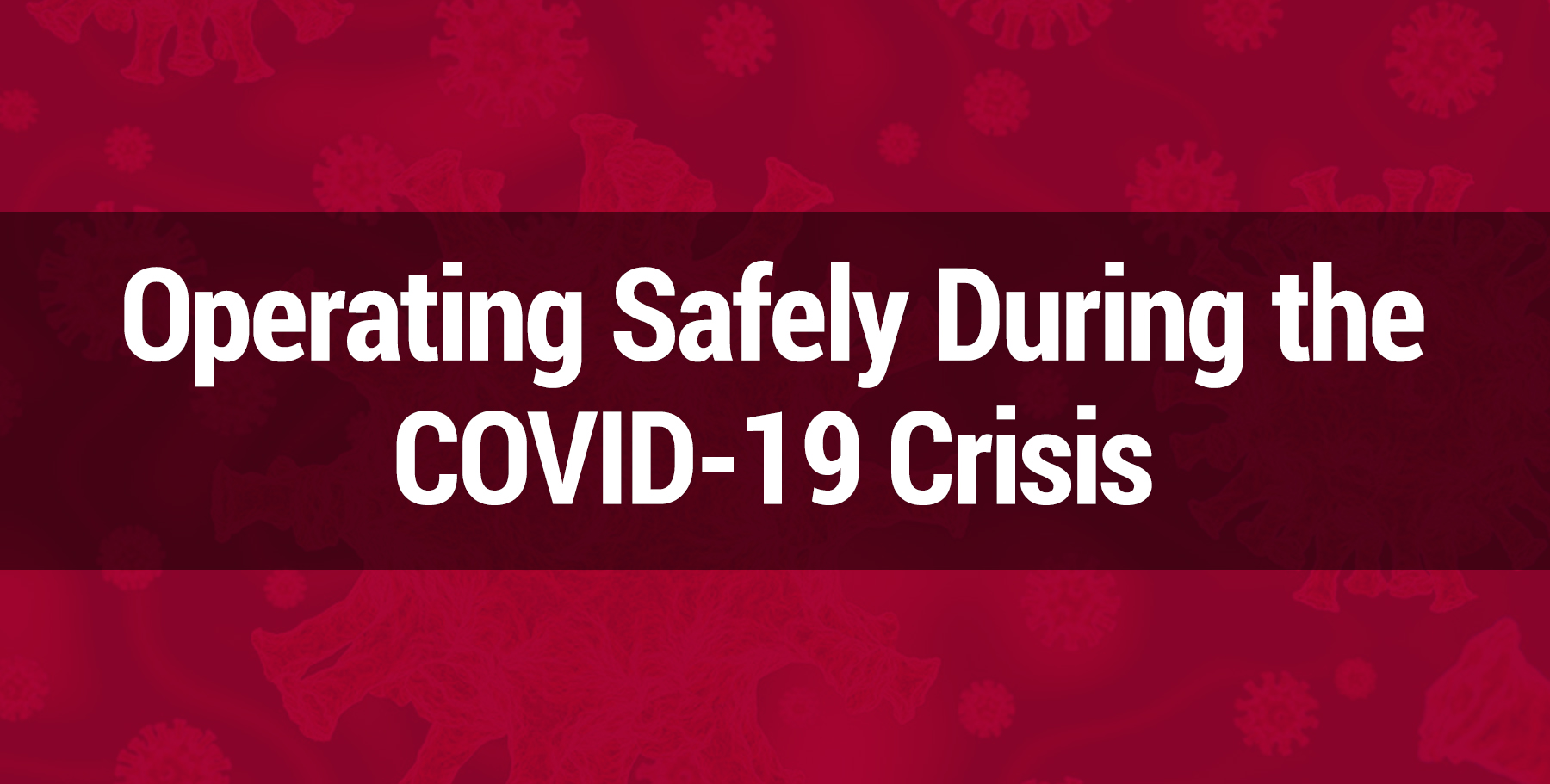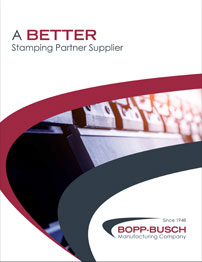
As we begin to bring back normal operations, all manufacturers will need to have procedures in places for employee safety, including Bopp-Busch. First of all, you will need to determine your employees’ classification. This specification will determine the guidelines you need to have in place. For example, Bopp-Busch’ workers are classified as lower-exposure-risk. Workers in this category have minimal occupational contact with the public and other coworkers. If you fall into the same category, the procedures Bopp-Busch will implement may help you to decrease the spread of COVID-19 and lower the impact in its workplace:
Reducing the Transmission
- Actively encourage sick employees with Covid-19 symptoms to get tested for Covid-19.
- Employees who have symptoms should notify their supervisor and get tested for COVID-19.
- Sick employees should follow CDC-recommended steps and not return to work until the criteria to discontinue home isolation are met.
- Employees who are well but who have a sick family member at home with COVID-19 should notify their supervisor and follow CDC recommended precautions.
Limiting Worker Exposure
- Every effort will be made to separate employees working with-in 6ft of each other. Any employees working within 6 ft of another will be required to wear the appropriate PPE.
- Only essential in-person contact with customers or delivery drivers is permitted.
Separating Sick Employee
- Employees who appear to have symptoms upon arrival at work or who become sick during the day should immediately be separated from other employees, customers, and visitors and sent home.
- If an employee is confirmed to have COVID-19 infection, inform fellow employees of their possible exposure to COVID-19 in the workplace while maintaining confidentiality.
Educating Employees About COVID-19 Protection
- Stay home if you are sick, except to get medical care.
- Inform your supervisor if you have a sick family member at home with COVID-19.
- Wash your hands often with soap and water for at least 20 seconds.
- Use hand sanitizer with at least 60% alcohol if soap and water are not available.
- Avoid touching your eyes, nose, and mouth with unwashed hands.
- Cover your mouth and nose with a tissue when you cough or sneeze or use the inside of your elbow.
- Throw used tissues in the trash and immediately wash hands with soap and water for at least 20 seconds.
- Clean AND disinfect frequently touched objects and surfaces such as workstations, keyboards, telephones, handrails, and doorknobs.
- Avoid using other employees’ phones, desks, offices, or other work tools and equipment, when possible. If necessary, clean and disinfect them before and after use.
- Practice social distancing by avoiding large gatherings and maintaining distance of approximately 6 feet when possible.
Maintaining Healthy Business Operations
- Identify a workplace coordinator.
- Train employees on this risk reduction plan.
- Implement flexible sick leave and supportive policies and practices.
Determining Procedures if Absenteeism Spikes
- Monitor and respond to absenteeism at the workplace.
- Prioritize essential business functions in case we experience higher than usual absenteeism.
- Cross-train employees to perform essential functions so the workplace can operate even if key employees are absent.
Establishing policies and practices for social distancing (approximately 6 feet)
- Implementing flexible worksites (e.g., telework)
- Implementing flexible work hours (e.g., staggered shifts)
- Increasing physical space between employees at the worksite
- Implementing flexible meeting and travel options (e.g., postpone non-essential meetings or events)
Maintaining a Healthy Work Environment
- Utilize building ventilation equipment when the building is occupied.
- Support respiratory etiquette and hand hygiene for employees, customers, and worksite visitors.
- Provide tissues and no-touch disposal receptacles.
- Encourage employees to wear masks (not necessarily respirators) to avoid the spread of pathogens.
- Provide soap and water or hand sanitizer in the workplace. Place hand sanitizers in multiple locations to encourage hand hygiene.
- Place posters that encourage hand hygiene to help stop the spread at the entrance to your workplace and in other workplace areas where they are likely to be seen.
- Discourage handshaking – encourage the use of other noncontact methods of greeting.
- Direct employees to visit the coughing and sneezing etiquette and clean hands webpage for more information.
Performing routine environmental cleaning and disinfection
- Routinely clean and disinfect all frequently touched surfaces in the workplace, such as workstations, keyboards, telephones, handrails, and doorknobs.
- If surfaces are dirty, they should be cleaned using a detergent or soap and water prior to disinfection.
- For disinfection, most common EPA-registered household disinfectants should be effective.
- Provide disposable wipes so that commonly used surfaces (for example, doorknobs, keyboards, remote controls, desks, other work tools and equipment) can be wiped down by employees before each use.
- Perform enhanced cleaning and disinfection after persons suspected/confirmed to have COVID-19 have been in the facility.
Take care when attending meetings and gatherings, these also include customer and visitors
- Carefully consider whether travel is necessary.
- Consider using videoconferencing or teleconferencing when possible for work-related meetings and gatherings.
- Consider canceling, adjusting, or postponing large work-related meetings or gatherings that can only occur in-person.
- When videoconferencing or teleconferencing is not possible, hold meetings in open, well-ventilated spaces.
Since 1948, Bopp Busch has been committed to maintaining a safe workplace for our team. We will to continue to meet this obligation during the current COVID-19 crisis while supplying quality parts to our customers. To learn more about Bopp Busch and our capabilities, contact us today.


